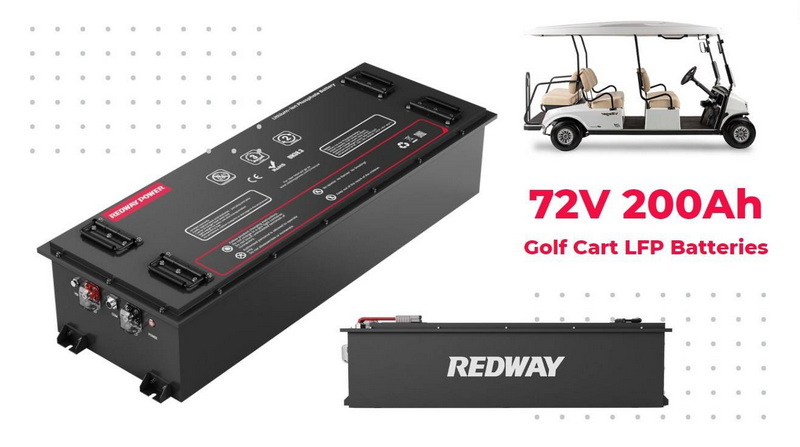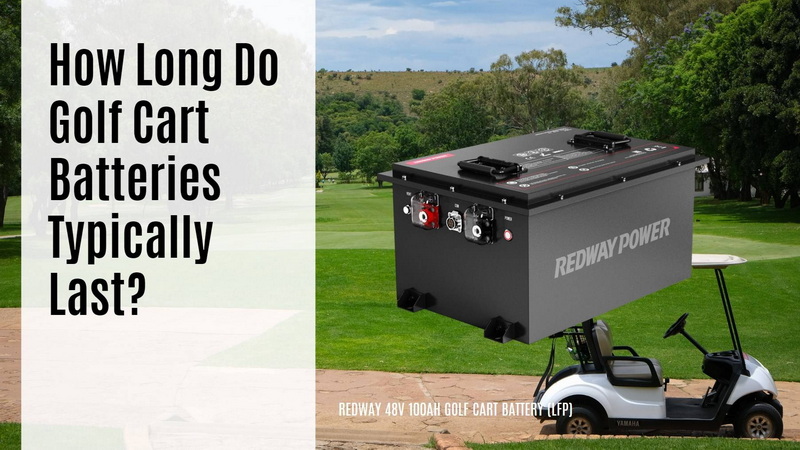Content Menu
● Introduction
● Understanding Electric Golf Cart Components
>> Battery
>> Motor
>> Controller
>> Frame and Body
>> Tires and Suspension
● Factors Affecting Electric Golf Cart Lifespan
>> Battery Type and Maintenance
>> Usage Patterns
>> Environmental Conditions
>> Maintenance and Care
● Average Lifespan of Electric Golf Carts
● Maximizing the Lifespan of Your Electric Golf Cart
>> Battery Care
>> Regular Maintenance
>> Proper Storage
>> Responsible Usage
● Upgrading and Refurbishing
>> Battery Upgrade
>> Motor and Controller Replacement
>> Body Refurbishment
● When to Consider Replacement
● Environmental Impact and Sustainability
● Future Trends in Electric Golf Cart Technology
● Economic Considerations
● Case Studies: Long-Lasting Electric Golf Carts
● Comparing Electric and Gas Golf Carts
● Professional Maintenance Services
● Conclusion
● Frequently Asked Questions
>> 1. How often should I charge my electric golf cart?
>> 2. Can I use my electric golf cart in the rain?
>> 3. How can I tell if my golf cart batteries need replacement?
>> 4. Is it worth upgrading to lithium-ion batteries for my electric golf cart?
>> 5. How can I protect my electric golf cart from theft?
Introduction
Electric golf carts have become increasingly popular not just on golf courses, but also in residential communities, campuses, and various other settings. Their quiet operation, low maintenance requirements, and eco-friendly nature make them an attractive option for many. However, a common question that arises when considering an electric golf cart is: "How long should it last?" This comprehensive guide will explore the factors that influence the lifespan of electric golf carts, maintenance tips to extend their longevity, and what to expect in terms of durability and performance over time.

Understanding Electric Golf Cart Components
To grasp how long an electric golf cart should last, it's crucial to understand its key components:
Battery
The battery is the heart of an electric golf cart. Most carts use either lead-acid or lithium-ion batteries.
Motor
The electric motor converts electrical energy from the battery into mechanical energy to power the cart.
Controller
This component regulates the power flow from the battery to the motor, controlling speed and acceleration.
Frame and Body
Usually made of aluminum or steel, the frame and body provide structure and protection.
Tires and Suspension
These components affect the cart's ride quality and handling.
Factors Affecting Electric Golf Cart Lifespan
Several factors influence how long an electric golf cart can last:
Battery Type and Maintenance
The type of battery and how well it's maintained significantly impact the cart's overall lifespan.
Usage Patterns
Frequency of use, terrain, and driving habits all play a role in determining longevity.
Environmental Conditions
Exposure to extreme temperatures, humidity, and corrosive elements can affect the cart's components.
Maintenance and Care
Regular maintenance and proper storage are crucial for extending the life of an electric golf cart.
Average Lifespan of Electric Golf Carts
On average, a well-maintained electric golf cart can last between 20 to 40 years. However, individual components may need replacement or refurbishment during this time:
- Batteries: 4-8 years
- Motor: 15-20 years
- Controller: 15-20 years
- Frame and Body: 20-40 years (with proper care)
Maximizing the Lifespan of Your Electric Golf Cart
To ensure your electric golf cart lasts as long as possible, consider the following tips:
Battery Care
1. Charge batteries properly after each use
2. Avoid deep discharges
3. Keep batteries clean and free from corrosion
4. Maintain proper water levels (for lead-acid batteries)
Regular Maintenance
1. Check and tighten connections regularly
2. Inspect tires for wear and maintain proper inflation
3. Lubricate moving parts as recommended
4. Clean the cart regularly, especially after use in muddy or dusty conditions
Proper Storage
1. Store in a cool, dry place
2. Use a weatherproof cover when stored outdoors
3. Disconnect the battery during long periods of inactivity
Responsible Usage
1. Avoid overloading the cart beyond its weight capacity
2. Drive at moderate speeds and avoid sudden accelerations or stops
3. Use appropriate chargers and accessories
Upgrading and Refurbishing
As your electric golf cart ages, you may consider upgrades or refurbishments to extend its life:
Battery Upgrade
Switching to lithium-ion batteries can improve performance and longevity.
Motor and Controller Replacement
Upgrading these components can breathe new life into an older cart.
Body Refurbishment
Repainting or replacing body panels can restore the cart's appearance.

When to Consider Replacement
While electric golf carts can last for decades, there may come a time when replacement is more practical than repair:
1. When repair costs consistently exceed the cart's value
2. If safety features are outdated and can't be upgraded
3. When performance significantly degrades despite maintenance
Environmental Impact and Sustainability
Electric golf carts are generally more environmentally friendly than gas-powered alternatives. Their long lifespan contributes to sustainability by reducing waste and resource consumption.
Future Trends in Electric Golf Cart Technology
Advancements in battery technology, motor efficiency, and smart features are likely to further extend the lifespan and improve the performance of electric golf carts in the future.
Economic Considerations
When evaluating the lifespan of an electric golf cart, consider the total cost of ownership:
1. Initial purchase price
2. Ongoing maintenance costs
3. Energy costs (electricity for charging)
4. Potential resale value
Case Studies: Long-Lasting Electric Golf Carts
Several examples demonstrate the potential longevity of electric golf carts:
1. A 1970s model still in use at a Florida retirement community after 45 years
2. A university campus cart with over 30 years of continuous service
3. A refurbished 1990s cart outperforming newer models in a rental fleet
These cases highlight the importance of proper maintenance and the potential for long-term use.
Comparing Electric and Gas Golf Carts
While this article focuses on electric golf carts, it's worth noting how they compare to gas-powered alternatives in terms of lifespan:
| Aspect | Electric Golf Carts | Gas Golf Carts |
| Engine Life | 20-30 years | 10-20 years |
| Maintenance | Less frequent, simpler | More frequent, complex |
| Fuel Costs | Lower (electricity) | Higher (gasoline) |
| Environmental Impact | Lower emissions | Higher emissions |
Professional Maintenance Services
While many aspects of golf cart maintenance can be done by owners, professional services can help extend the life of your cart:
1. Annual inspections
2. Battery reconditioning
3. Motor and controller diagnostics
4. Frame and suspension checks
Conclusion
Electric golf carts have the potential to last for several decades with proper care and maintenance. The key factors influencing their lifespan include battery maintenance, regular upkeep, responsible usage, and environmental conditions. By following best practices in care and considering timely upgrades, owners can maximize the longevity of their electric golf carts, enjoying reliable performance for many years.
As technology continues to advance, we can expect even longer-lasting and more efficient electric golf carts in the future. Whether you use your cart for golfing, community transportation, or work purposes, understanding its lifespan and how to extend it will help you make the most of your investment.

Frequently Asked Questions
1. How often should I charge my electric golf cart?
It's best to charge your electric golf cart after each use, even if you've only used it for a short time. This helps maintain battery health and prevents deep discharges that can shorten battery life. Avoid leaving the cart uncharged for extended periods, as this can lead to battery sulfation and reduced performance.
2. Can I use my electric golf cart in the rain?
While most electric golf carts are designed to withstand light rain, it's not recommended to use them in heavy downpours or standing water. Excessive exposure to moisture can damage electrical components and accelerate corrosion. If you must use your cart in wet conditions, ensure it's properly dried and stored afterward to prevent long-term damage.
3. How can I tell if my golf cart batteries need replacement?
Signs that your golf cart batteries may need replacement include:
- Reduced range or power
- Longer charging times
- Visible corrosion or damage to battery terminals
- Batteries that no longer hold a charge
- Age (typically 4-8 years for lead-acid batteries)
If you notice these signs, it's best to have your batteries professionally tested to determine if replacement is necessary.
4. Is it worth upgrading to lithium-ion batteries for my electric golf cart?
Upgrading to lithium-ion batteries can be a worthwhile investment for many golf cart owners. Benefits include:
- Longer lifespan (up to 10 years or more)
- Lighter weight, improving cart performance
- Faster charging times
- Maintenance-free operation
However, the initial cost is higher than lead-acid batteries. Consider your usage patterns and long-term plans for the cart when deciding if the upgrade is right for you.
5. How can I protect my electric golf cart from theft?
To protect your electric golf cart from theft:
- Always remove the key when not in use
- Install a GPS tracking device
- Use a steering wheel lock or pedal lock
- Store the cart in a secure, locked area when possible
- Consider adding an alarm system
- Mark your cart with a unique identifier for easy recognition
These measures can significantly reduce the risk of theft and increase the chances of recovery if your cart is stolen.










































